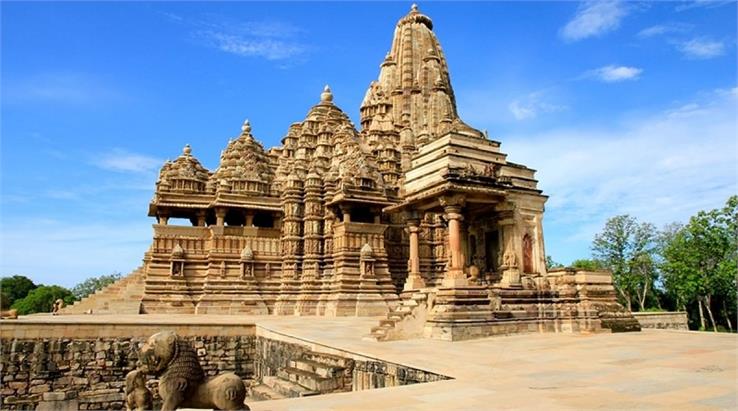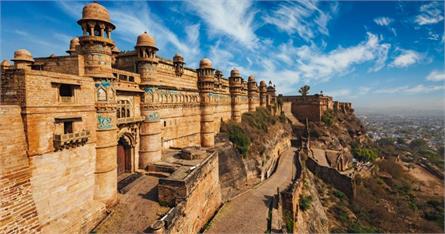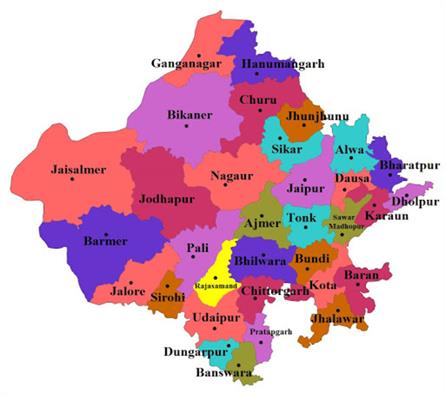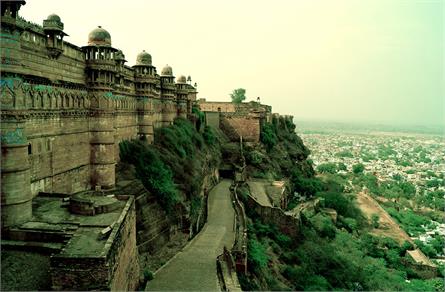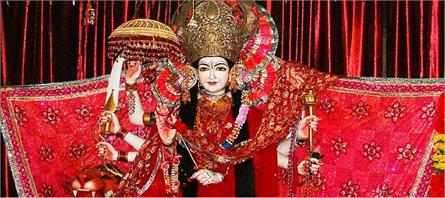Must Visit Forts and Temples of Madhya Pradesh - AlightIndia
Indian architecture speaks of its time and place and lives through the timelessness of centuries.
To be able to walk through these structures of grandeur, to gaze at the generosity of the buildings, and to be able to envision the stories that existed amongst these walls and walkways is a time travel machine in itself. Forts and temples are our postcards from the past.
One such destination to marvel at the wonders of the past is Madhya Pradesh. Madhya Pradesh is the central state of India. It is situated in the middle of the country, which is why it is also called the heart region of India. The name Madhya Pradesh was given to the state by Pandit Jawaharlal Nehru. The heritage of the beautiful natural hues and the lives of the tribes, their dances, music, and songs, this colour shows a different shade through every different angle of the vision. The state has been honoured with the National Tourism Award for 2010-11 because of its famous tourist places, mainly Bhimbetka, Panchavati, Khajuraho Temple, Sanchi Stupa, Gwalior Fort, and Ujjain remain tourist attractions.
Culturally, Madhya Pradesh is unique. It is a harmony of major cultural regions like Nimar, Malwa, Bundelkhand, Baghelkhand, Mahakoshal, and Gwalior. The majestic forts and temples of Madhya Pradesh are the stamp of the rich history of this beautiful destination.
Forts of Madhya Pradesh | Architecture | History| Tourist attractions
Madhya Pradesh is home to several impressive forts that showcase the rich history and architectural heritage of the region. The forts given below are not only popular tourist attractions but also serve as a reminder of the state's glorious past.
1. Gwalior Fort
Gwalior Fort is the oldest historic hill fort in Gwalior, Madhya Pradesh, India. The Fort has been a symbol of power and strength for centuries and has witnessed the rise and fall of many dynasties. It is the most significant Fort in India and attracts many tourists yearly. The Fort was first built in the 6th century by the Rajput king Suraj Sen, who was cured of leprosy by the saint Gawalipa. The Fort was named after the saint, and the city was named after the king.
Over the centuries, the Fort was ruled by various dynasties, including the Mughals, Marathas, and British. The Fort is built on the hilltop above the surrounding plains. Many places, temples, and other structures are built inside the walls. The specialty of this Fort is that it is famous for its beautiful architecture, a blend of Hindu, Mughal, and European styles. The most notable structure inside the Fort includes the Man Mandir Palace, which Maan Singh built in the 15th century.
Another temple, Teli ka mandir, is dedicated to Lord Vishnu. The Fort also has several other temples, including the Saas-bahu and Chaturbhuj temples. The Fort has two main entrances, the Hathi Pol and Badal Mahal gate. Gwalior Fort is one of the popular destinations in India. The Fort also hosts many cultural events and festivals, including the Tansen Music Festival, annually in December. A visit to Gwalior Fort is necessary for everyone interested in indulging in history, architecture, and culture.
2. Orchha Fort
Orchha Fort is situated in Orchha town, Madhya Pradesh. This grand Fort was built in 1501 AD by Raja Rudra Pratap Singh, a Bundela Rajput. The Raj Mahal and Ram Mandir inside this Fort were established by Raja Madhurkar Singh, who ruled there from 1554 to 1591. Jahangir Mahal was built in Muslim and Rajput architectural style, a square structure with eight large domes.
Apart from this, there is also a Sheesh Mahal known as the Palace of mirrors. The Sheesh Mahal is a magnificent room with a high and carved ceiling. This palace is currently converted into a hotel, with thousands of tourists visiting. The most beautiful spot of this Fort is its Phool Bagh, a well-maintained garden with a row of water fountains that end in the "Mahal-Mandap," which also has 08 pillars.
3. Sabalgarh Fort
Sabalgarh Fort is located in Sabalgarh of Madhya Pradesh. This 16-17th century fort is built on a huge rock northeast of Sabalgarh. This Fort is 60 km from Murena city and lies on a hilltop surrounded by the glorious blessings of Mother Nature.
The Fort is architecturally constructed in Rajasthani style and has three entrance gates. The Fort stands tall with a rich cultural foundation of history, intricately designed palaces, temples, and residences. Mountains surround the Fort with lush greenery, which enhances its beauty. This is marvellous and worth gazing at the site and a must-visit place for every fort-lover. There is a famous ancient temple, Alakhiya Khoh. It is connected with the goddess Kaali Mata. People celebrate the nine-day fair in this temple on the occasion of Navratri every year.
4. Vijayraghavgarh Fort
Vijayraghavgarh Fort is located in Katni, Madhya Pradesh. It is situated to the south of the Vindhya mountain range. Prayag Das built the Fort in the first half of the 19th century using thin bricks, stones, and lime mortar. The architecture of this Fort consists of fragments of old square columns and door frames.
The fortification walls are rectangular, having square bastions on all four corners. Kachahari, Hamam, and a theatre surround the Fort. The temples and step-wells are built inside the Fort. This Fort is fully decorated with paintings.
Temples of Madhya Pradesh
Madhya Pradesh is home to some of the most beautiful temples in India. The state is famous for its rich cultural heritage and historic architecture. The temples of Madhya Pradesh are known for their intricate carvings, stunning sculptures, and beautiful paintings. Whether you are a history buff or a spiritual seeker, a visit to these temples is a must. Here are some of the best temples of MP given below.
1. Chaturbhuj Temple
Chaturbhuj temple is located in Orchha, Madhya Pradesh, and is dedicated to Lord Vishnu. This temple is a blend of history and spirituality. Madhukar Shah built it for his wife. She had taken Lord Ram in the form of a child. Before the temple was built, the idol of the god was kept in the palace for some time, but later no one could move the idol. It is believed that when lord Ram came to the palace with the queen, he wished to live like a king in the palace.
After that, Rama was worshipped like a king. Even today, in Orchha, there is the rule of Prabhu Shri Ram Raja Sarkar. Today, there is no such temple in the world where the Lord is worshipped as a king, but Chaturbhuj temple in Orchha is such a temple where Lord Rama is worshipped as a king. It is a bastion and temple for tourists from all over the world.
2. Kaal Bhairav Temple
Kaal Bhairav temple is one of the most famous ancient temples. The temple is approx 8 km away from Ujjain. The walls of the temple were decorated with Malwa paintings. The original temple is believed to have been built by an unknown king named Bhadrasen. It is dedicated to Kaal Bhairav, the patron deity of the city.
Kaal Bhairav is a form of Lord Shiva situated on the banks of the Shipra River. It is one of the most active temples in the city, with hundreds of devotees visiting it daily. The temple of Lord Kaal Bhairav is also known for its uniqueness. The miraculous and mysterious thing about this temple is that the idol of Kaal Bhairav, situated here, consumes alcohol. Much scientific research was done to determine where the liquor goes from the idol.
3. Mahakaleshwar Temple
Mahakaleshwar temple is located in the historic city of Ujjain. This temple is particularly the one out of the 12 Jyotirlingas in the south, which signifies the Lord of time and death. This temple was built in the 6th century AD by Kumar Sena, the son of the former king of Ujjain. Lord Shiva is known by the name Mahakaleshwar or the time of god. There are a variety of structures in the temple that show multiple mythological stories of the past. There are different sculptures of different gods and goddesses. The path of the mega corridor contains 108 pillars representing the form of Anand Tandav of Lord Shiva.
Many religious cultures have around 76 idols between 9 to 15 feet tall and about 110 small ones installed along the Mahakal path. All of this depicted the life of lord shiva. The temple murals represent Shiva Purana's stories, such as the act of creation, the story of Daksha, the story of Satti, and the birth of Ganesha. This is the perfect place to remove all life bustles and indulge in this jyotirlinga's purity.


